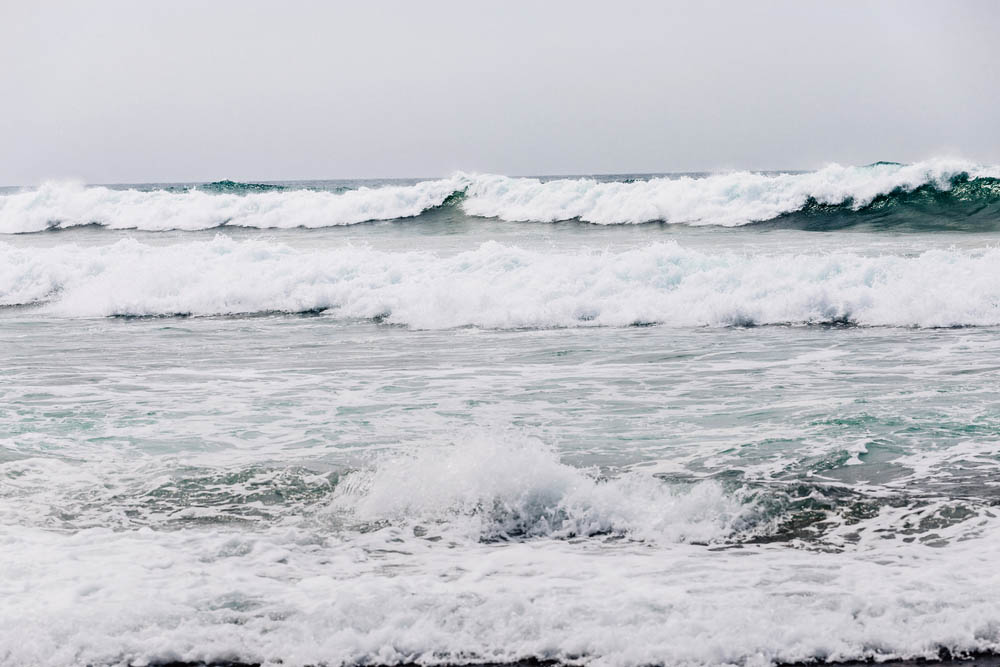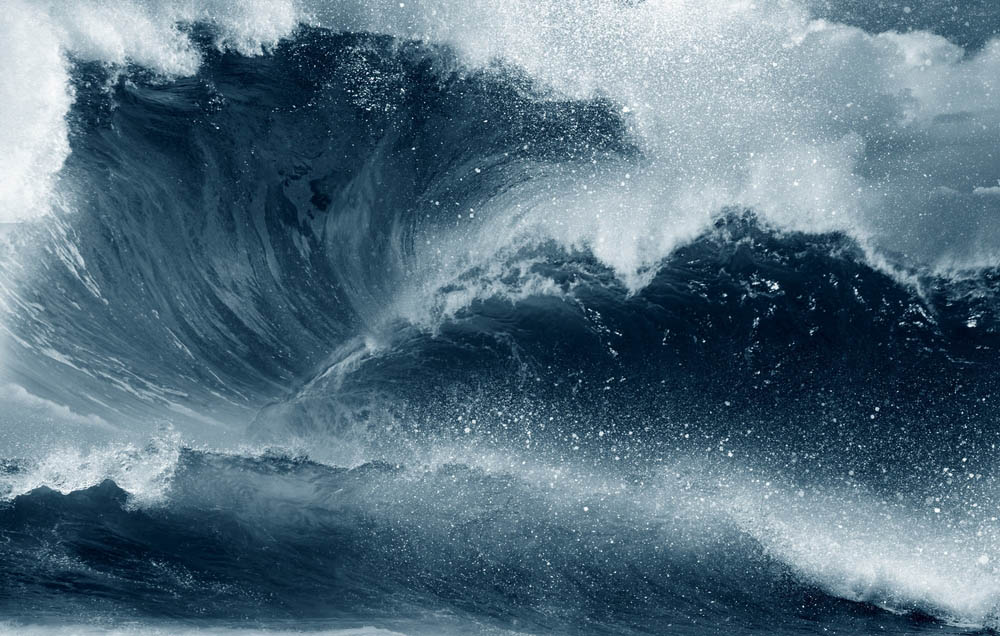What are tsunamis?
Tsunamis are often incorrectly referred to as tidal waves, but a tsunami is actually a series of waves that can travel at speeds averaging 450 – 600 miles per hour in the open ocean. As the waves approach the coast, their speed decreases, and their amplitude increases. Unusual wave heights have been known to be over 100 feet high. However, waves that are 10 to 20 feet high can be very destructive and cause many deaths or injuries.
From an initial tsunami generating source area, waves travel outward in all directions, much like the ripples caused by throwing a rock into a pond. As these waves approach coastal areas, the time between successive wave crests varies from 5 to 90 minutes. The first wave is usually not the largest in the series of waves, nor is it the most significant. Furthermore, one coastal community may experience no damaging waves while another, not that far away, may experience destructive deadly waves. Depending on a number of factors, some low-lying areas could experience severe inland inundation of water and debris of more than 1,000 feet.


Tsunamis in the Caribbean
In the past 500 years, there have been ten confirmed earthquake-generated tsunamis in the Caribbean Basin, with four causing fatalities. An estimated 350 people in the Caribbean were killed by these events.
All known sources capable of causing tsunamis occur within striking distance of the Eastern Caribbean, and there are also distant sources across the Atlantic. Since the islands lie in an area of relatively high earthquake activity for the Caribbean, the most likely tsunamis to affect the region are those which can be triggered by shallow earthquakes (<50km depth), in the region, greater than magnitude 6.5. The recurrence rate for tsunamis in the Caribbean is approximately one destructive tsunami per century for local earthquakes and one destructive tsunami per 200 years for distant earthquakes.
Currently, there is no tsunami warning system for the Caribbean, however, an interim arrangement exists with the Pacific Tsunami Warning Centre. Scientists at the Seismic Research Unit at the University of the West Indies St. Augustine campus in Trinidad and Tobago, together with other regional agencies such as the Caribbean Disaster Emergency Response Agency (CDERA), are in the process of developing a warning system but it may be several years before this is complete.
Protect Yourself from Tsunamis
All tsunamis are potentially dangerous, even though they may not damage every coastline they strike. Damaging tsunamis, like that which occurred in Asia in December 2004, are very rare. While our coastlines are vulnerable, tsunamis are infrequent. Understand the hazard and learn how to protect yourself, but don’t let the threat of tsunamis ruin your enjoyment of the beach.
At the moment there is no tsunami warning system for Jamaica. You must, therefore, become familiarized with the warning signs.
- An earthquake is a natural tsunami warning. If you feel a strong quake do not stay in a place where you are exposed to a tsunami, such as at the beach or if you live along the coastline. If you hear of an earthquake be aware of the possibility of a tsunami and listen to the radio or television for additional information. Remember that an earthquake can trigger killer waves thousands of miles across the ocean many hours after the event generated a tsunami.
- Witnesses have reported that an approaching tsunami is sometimes preceded by a noticeable fall or rise in the water level. If you see the ocean receding unusually rapidly or far it’s a good sign that a big wave is on its way. Go to high ground immediately.
Be Familiar with the Tsunami Warning Signs
Many people were killed by the Indian Ocean tsunami because they went down to the beach to view the retreating ocean exposing the seafloor. Experts believe that a receding ocean may give people as much as five minutes’ warning to evacuate the area.
- Remember that a tsunami is a series of waves and that the first wave may not be the most dangerous. The danger from a tsunami can last for several hours after the arrival of the first wave. A tsunami wave train may come as a series of surges that are five minutes to an hour apart. The cycle may be marked by a repeated retreat and advance of the ocean. Stay out of danger until you hear it is safe.
Survivors of the Indian Ocean tsunami reported that the sea surged out as fast and as powerfully as it came ashore. Many people were seen being swept out to sea when the ocean retreated.
- A tsunami surge may be small at one point of the shore and large at another point a short distance away. Do not assume that because there is minimal sign of a tsunami in one place it will be like that everywhere else.
- Tsunamis can travel up rivers and streams that lead to the ocean. Stay away from rivers and streams that lead to the ocean, as you would stay away from the beach and ocean if there is a tsunami.

